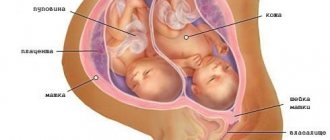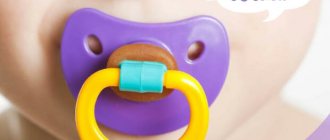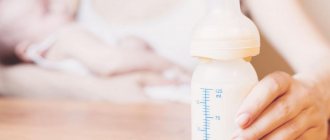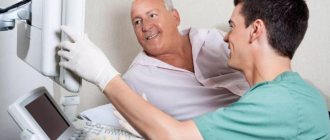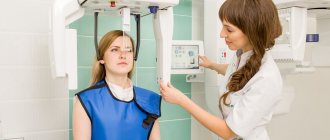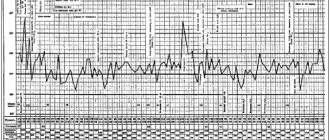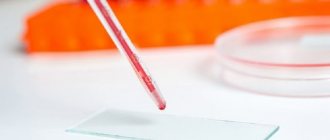Lecture on Thermometry
Thermometry.
is a measurement of body temperature. Thermometer - from Greek. thermia - heat, metrio - measuring. Thermometer - from Lat. degree - step, step. The scales are Fahrenheit (he used the freezing point of saline solution, the lowest reproducible temperature at the time, as the lower reference point (0°F), and human body temperature (96°F) as the upper reference), Kelvin ( substantiated the concept of absolute zero temperature, at which any thermal movement ceases. It is from this absolute zero that temperatures are measured on the Kelvin scale), Celsius (The reference points corresponded to the Reaumur temperature scale, but 1 degree was equal to 1/100 of the difference in the temperatures of boiling water and melting ice. ), Reaumur (one degree was equal to 1/80 of the difference between the boiling temperatures of water and the melting of ice at atmospheric pressure. After several decades, this temperature scale practically fell out of use.). You can convert temperature from one temperature scale to another if you know that 0°C corresponds to 32°F and 273.15 K, and 100°C corresponds to 212°F and 373.15 K.
Thermoregulation.
Humans, like other mammals, have a constant body temperature. It is ensured by the interaction of 2 processes: heat production (heat generation) and heat transfer.
Heat generation in the body (chemical processes) occurs as a result of oxidative processes in muscles, internal organs, and metabolism.
Heat transfer (physical processes) is carried out by heat conduction, heat radiation, and evaporation. Thus, the complex regulation of the processes of heat transfer and heat production ensures the temperature constancy of the internal environment of the body, optimal for the normal functioning of organs and tissues.
Indicators of normal body temperature,
physiological fluctuations in body temperature.
- Depending on age:
For children - the norm is 37-37.2 degrees
For adults - the norm is from 36 to 37 degrees.
For the elderly - the norm is from 35.5 to 36 degrees
- Depending on the time of day, i.e. morning temperature is lower than evening temperature.
- From the place where body temperature is measured: the temperature on the skin is lower than on the mucous membranes.
- By gender: Women have a higher temperature than men, especially at the time of ovulation.
- Physical activity and large meals can increase body temperature.
- Physiological fluctuations in body temperature range from 0.3 degrees to 0.8 degrees, but not more than 1 degree.
- Under stress, the temperature may rise, and under depression, it may fall.
- The minimum lethal temperature is from 15 to 23 degrees.
- The maximum lethal temperature is more than 42-43 degrees.
Types of thermometers for measuring body temperature.
- Medical thermometer maximum
- Digital Thermometer
- Electric thermometers or temperature probes - used for diagnostic purposes - local measurement of temperature in certain cavities of the human body, for example the esophagus, stomach, intestines.
- Radio capsules - which are swallowed by patients. Passing through the gastrointestinal tract, radio capsules equipped with sensors transmit signals about changes in the body temperature of certain objects, which are recorded by the appropriate device.
- Registration of natural thermal radiation emanating from the surface of the body (thermography or thermal imaging) is used to diagnose a number of diseases, for example, inflammatory diseases of internal organs, malignant tumors of the mammary glands, thyroid gland, etc. The thermal imaging method is based on the fact that in some diseases above the lesion, an increase in the intensity of thermal radiation is determined, associated with changes in blood circulation and metabolic processes in the affected tissues.
- Thermotest is a plastic plate on which there is a suspension of liquid crystals. It is applied to the human body, at normal body temperature the letter N appears, at elevated temperature - T or FEBRIS (fever).
- Infrared Thermometer – Infrared thermometers come in ear, forehead and non-contact types. Measuring body temperature almost instantly, within 2-3 seconds, the non-contact forehead infrared thermometer allows you to measure body temperature without touching the patient's body, and also it does not need post-processing.
Medical thermometer device.
- Glass body
- Reservoir – for mercury (2 grams of mercury)
- A capillary is a glass tube through which mercury moves.
- The scale is in degrees, from 34 to 42 degrees (one division is 0.1 degree).
- A pin is a narrowing between the reservoir and the capillary.
Disinfection and storage of thermometers.
- Disinfection - complete immersion in a special container or container with a solution: 0.5% chloramine - 30 minutes, 1% chloramine solution - 15 minutes, 2% chloramine solution - 5 minutes. The electronic thermometer is wiped with 70% ethyl alcohol. After disinfection, the thermometer is rinsed under running water and wiped dry.
- The thermometer is stored dry, in a glass container, a layer of cotton wool is placed on the bottom, and the thermometer is lowered into the container with the reservoir facing down. There is a rubber cap on the opposite side of the thermometer to prevent the thermometer from slipping out when shaken. At home, the thermometer is stored in a case. In emergency situations (damage to the thermometer), mercury removal - demercurization - is carried out by specially trained personnel.
If a thermometer breaks, the most important thing is to thoroughly remove the mercury.
- Remove all people from the room where the thermometer broke.
- Open the window for fresh air;
- close the door tightly to isolate the contaminated room from other rooms.
- Wear a gauze bandage or respirator, rubber gloves.
- Do not wipe spilled mercury with a rag (this will only lead to further fragmentation of the mercury),
- Do not use a vacuum cleaner for cleaning. To collect mercury balls, you can use a rubber bulb, adhesive tape (or adhesive tape).
- Mercury droplets are removed from the periphery of the contaminated area to its center. Large drops are collected with a rubber bulb, small drops with an adhesive plaster. Everything collected and what was used to collect it (a rubber bulb, an adhesive plaster, a broken thermometer) is placed in an enamel or glass container filled with a demercutant solution and tightly closed with a lid. The collected mercury can be handed over to the local sanitary and epidemiological inspection (they can also be invited to analyze the air for the presence of mercury vapor).
The accident site where the thermometer broke is treated with a demercurutizer solution. Demercutizers are chemicals whose use reduces the rate of mercury evaporation and facilitates the mechanical removal of mercury. Demercutizers include:
- soap-soda solution (4% soap solution in 5% aqueous soda solution);
- 0.2% aqueous solution of potassium permanganate, acidified with hydrochloric acid (5 ml of acid, specific gravity 1.19, per 1 liter of potassium permanganate solution);
- 20% bleach solution;
- 5-10% solution of hydrochloric acid, etc.
In medical institutions, a facility must be created for demercurization with the necessary supply of chemical demercurization agents.
Locations for measuring body temperature.
- On the skin: armpit – 10 minutes, inguinal fold – 10 minutes
- On the mucous membranes: oral cavity - in the sublingual area, in the rectum, in the vagina - everywhere 5 minutes.
Measuring body temperature in the inguinal fold - measured for children, infants, and seriously ill patients. Position the patient, examine the groin fold, dry thoroughly, place the thermometer reservoir so that it comes into contact with the skin - 10 minutes.
Measuring body temperature in the rectum - lay the patient on his side (if there is a multi-bed room, then fence off with a screen) - wash your hands with a hygienic level, put on sterile gloves. Insert the thermometer lubricated with petroleum jelly 3-4 cm. Remove the thermometer after 5 minutes. Inform the patient of the measurement result. Immerse the thermometer in disinfectant. solution and remove gloves, wash hands. Record the result on the temperature sheet.
Measuring body temperature in the oral cavity. Contraindications: body temperature should not be measured in children or mentally ill children. Wash your hands and put on gloves. Place the reservoir in the oral area (sublingual area). Measurement time – 5 minutes. Inform the patient of the measurement results. Disinfect the thermometer. Remove gloves and wash hands. Register measurement results.
Registration of body temperature measurement results.
Digital recording. After measuring body temperature (in the hospital it is measured 2 times a day, in the morning on an empty stomach from 7 to 8 o’clock and in the evening before the last meal - from 17 to 18 o’clock). In addition, if it is necessary to measure body temperature after a certain time (2-3 hours) as prescribed by a doctor, this is called temperature profile measurements. Morning and evening temperature readings are recorded in numbers on the general guard temperature sheet.
For example, ward 1 - Ivan Ivanovich in the morning 36.6 degrees, in the evening - 36.8. Then. Body temperature measurement data is transferred to an individual temperature sheet in the medical history, where a graphical recording is made in the form of a black curve.
How to measure correctly
In different cavities and areas, the temperature indicator is measured according to certain rules. It is important to check the technical condition of the device you are using - replace the battery in the digital thermometer if necessary, adjust the infrared thermometer, and make sure the mercury thermometer is intact. If you have doubts about the reliability of the results obtained - for example, the child’s forehead is hot, but the device shows normal temperature, repeat the procedure or measure the indicator on another part of the body.
- Hedgehogs in a slow cooker - recipes with photos. How to cook hedgehogs from minced meat with rice and sauce in a slow cooker
- Lard in brine - recipes for dishes in a jar at home with photos
- How to cook pork tongue
Mercury thermometer
Before using a mercury thermometer, shake it to bring down the mercury column to the minimum value on the scale, less than 35 °C. The device must be dry and clean; if you measure orally or rectally, a prerequisite for using the thermometer is its preliminary disinfection. For glass thermometers, to avoid damage, there are rules for careful storage in a case.
When performing the procedure in the armpit, the device is kept in a state of balance, pressed tightly to the body for the required time. For oral measurement, the device is placed under the tongue, it closes tightly, and breathing is done through the nose. During the rectal method of measurement, the patient is placed in a lying position on his side, the thermometer is inserted through the sphincter into the rectum and held for two to three minutes.
Time to measure body temperature with a mercury thermometer
When using contact thermometers, the type of which is mercury, the time during which the measurement is carried out is important. Depending on the measurement location, it is:
- 5-10 minutes - for the axillary method;
- 2-3 minutes - for rectal;
- 3-5 minutes - for oral.
Electric thermometer
Digital measuring instruments must be used when you want accurate and fast results. The sound signal function, which is equipped with electric thermometers, makes it easier to monitor the temperature measurement, since it notifies the user when the measurement process is completed. They produce so-called instant thermometers, which, thanks to the high sensitivity of the thermoelement, give results in 2-3 seconds.
Remote temperature measurement
Measuring temperature readings from a distance is a convenient feature of infrared thermometers. These devices are the result of high-tech laboratory developments, which determines the quality of their work and the accuracy of the data obtained. They do not have a harmful effect on the body, and are suitable for both immobile patients and infants who are in constant motion.
